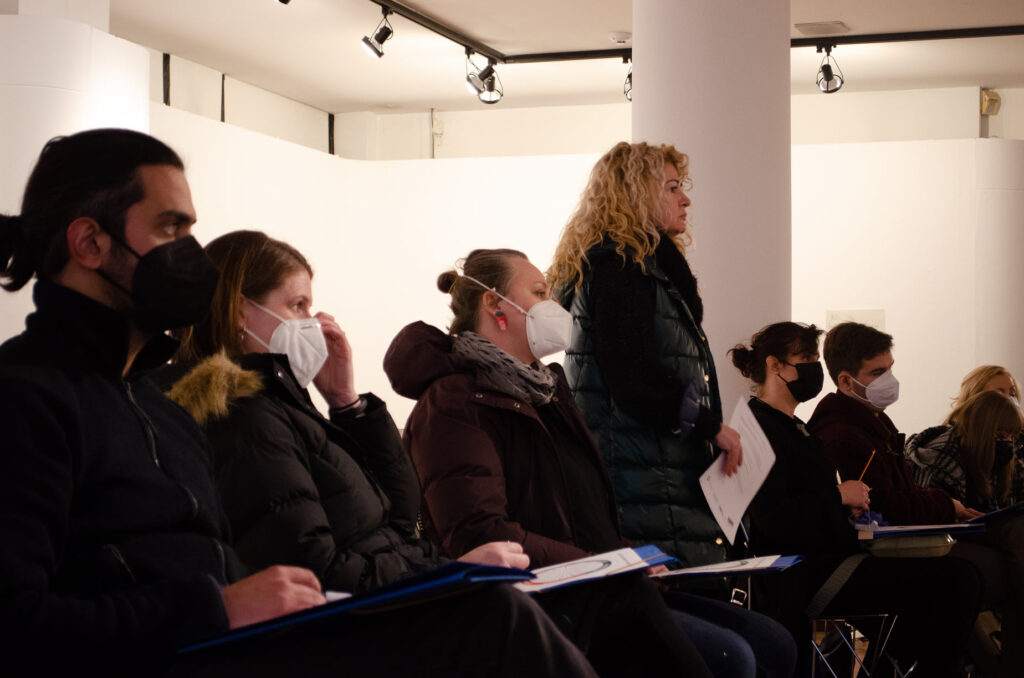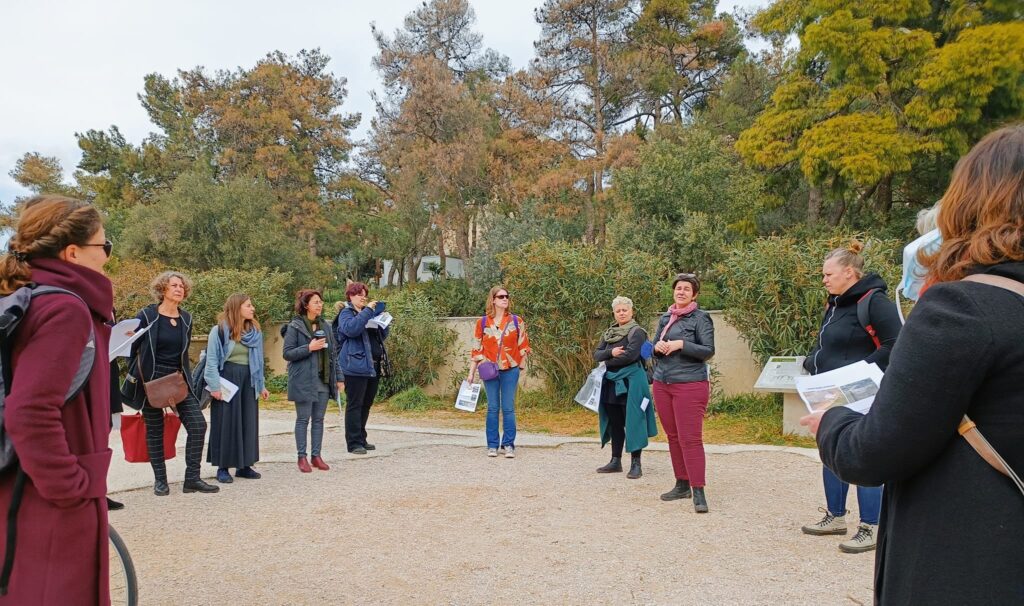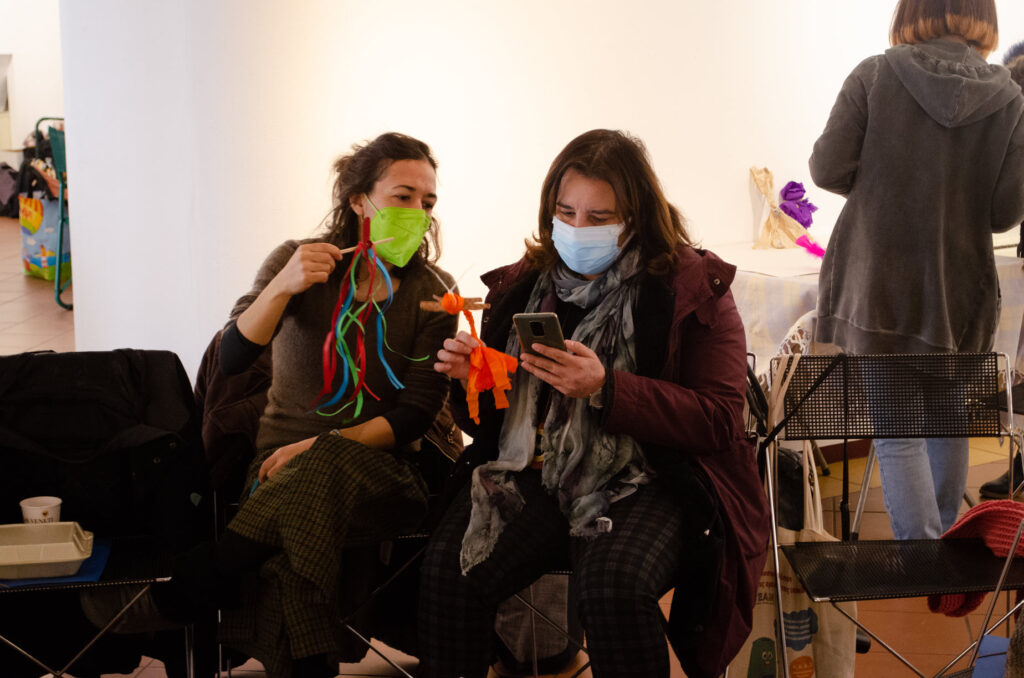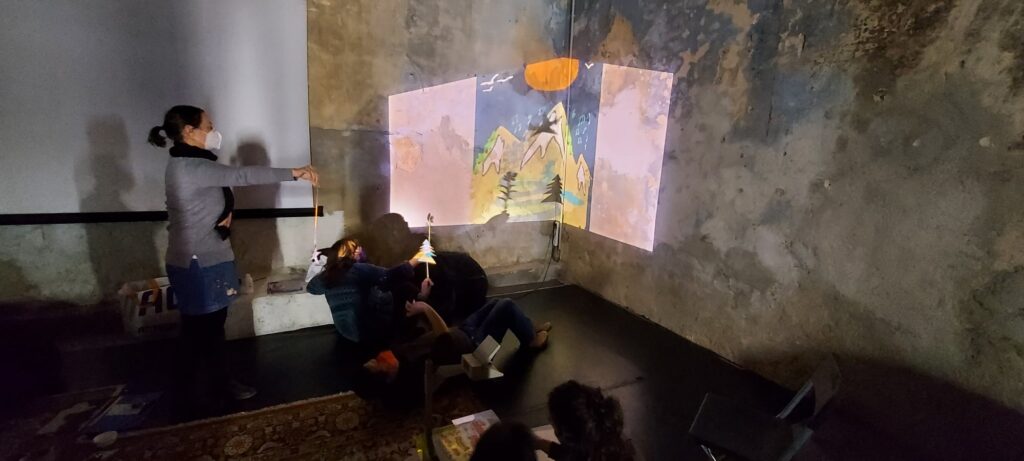The 5-day pilot program for teachers and artists from Ireland, Netherlands, Serbia, and Greece in Athens (4th to 8th of February) was the third training (second f2f) of ITAP-PD project. The first day of the training took place at the Cultural Centre “Melina Merkouri”, where the participants could also visit the permanent exhibition of the famous Haridimos Shadow Puppet Museum. The rest of the days the training continued at PLYFA Factory, a large space for performances and other arts events with indoor and outdoor opportunities for participants to work and create together.


40 people, teachers and artists came together. About 20 of them had already established a partnership from the previous pilot training. This process enriched their experience with new activities and art forms or led them to approach already known exercises from a different perspective. More than 20 teachers and artists did meet and worked for the first time in this training. Building on previous work, we continued to focus on creating effective partnerships between teachers and artists, nurturing creativity and enhancing our practices. We learned about each other’s educational systems knowing ourselves and our own cultural contexts, we acknowledged both the strengths and limitations we have, we shared inspiration and perspectives.

The first day was spent in activities leading to getting to know the group, sharing personal stories, understanding each other through creative exchange of our names, defining our expectations and hopes for the oncoming days. We used existing models as the key for understanding the partnership and creative processes, for experimenting with Creativos Genialos, for helping our tiny people avatars to explore the potentials of the venue.
Creativos Genialos and the Creative Process
The second day we looked back at the previous day’s work, we shared the feedback we already had collected and analyzed, which is part of our methodology, and we introduced the topic and objectives of the day. We continued our work with creative imagination. Participants were connected through the stories they created by random stimulus and the group was inspired by the ideas of community. We continued, having visitors and guest speakers, with presentations of existing practices of the partners and all participants had the opportunity to exchange their experiences. Then, a powerful non-verbal book was the inspiration to explore in duo’s and in groups the possibilities of building bridges using visual arts, nature material crafts, drama and movement workshops.


Building Bridges through different arts forms
On the third day, we did a site-specific workshop using cultural heritage as inspiration for connecting the past and the present/history of humanity. Matters of rights, humanity, decision-making came to light through the text of Antigone of Sophocles. Going back to our workshop space, we focused on the curricula of each partners country trying to find similarities and differences. We were seeking ways though which our teacher-artists collaboration could enrich the aims and objectives of those curricula and give new tools of learning and understanding. Having these legislative documents in mind we used still images as our artistic way to express our thoughts and suggestions of the work we will do with students in schools.


On the fourth day we visited the Acropolis Museum and our historic exploration continued in 2 groups in the old city of Athens under the title “5.500 years of unstoppable dialogue which still goes on’’. All way through this exploration, people walked with their partners, exchanged ideas, and created inspired photographs of their tiny people to the corners of the city and the monuments of this historic centre. Finally, going back to our venue a tutorial for partnership – communicating – planning and trust-building was explored through the IKEA design manual.
The fifth day, as in the previous training, was dedicated to the existing and future collaborative work between teachers and artists. Partners that had worked together already in schools demonstrated their work, and new teacher-artist partners presented the ideas of their future collaboration in residencies in schools. Excellent ideas were the basis of further discussion for future work and collaboration. In the end we had a space evaluation, expressing with our bodies our learning points, our new understandings, and impressions of this 5 days intensive work.

Evaluation of the 5th day – Where we stand, what we can do together
It is very promising to realize that the rotation of facilitation kept us creative, focused and enriched the possibilities and the skills that we need to build and develop both the conceptual framework and the practice of the project. Trust has been developed and now can be expanded.
We said goodbye full of experiences and with the certainty that we had new colleagues and new partners with whom we can share, explore and plan together for a better education for all our students. The Netherlands in April will be our next focus for inspiration and for expanding what we have already realized.

